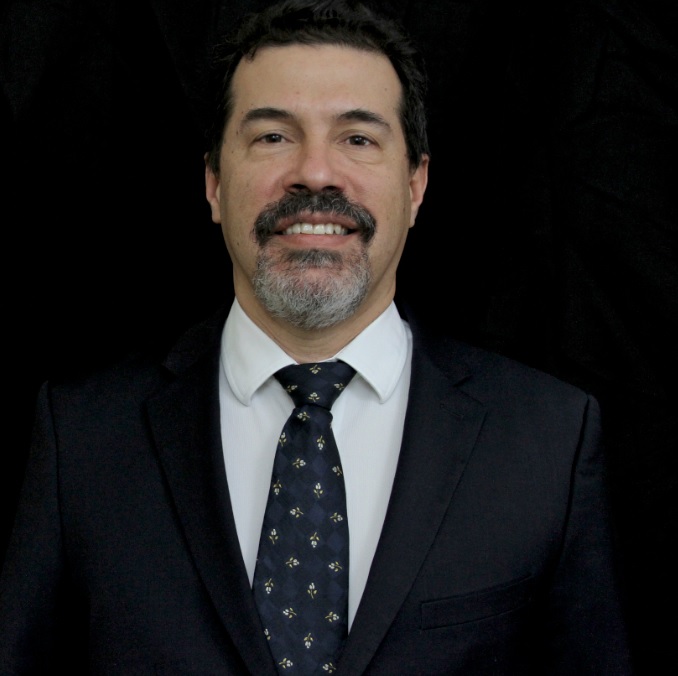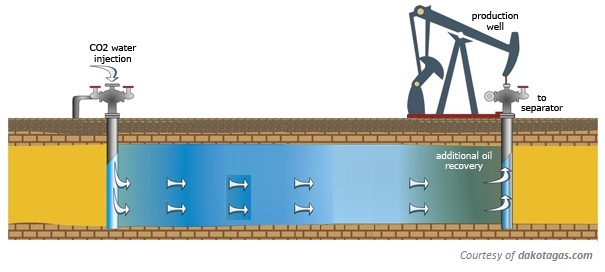RL Blogs

By Jamie Walker
Aug 10, 2014Supporting the industry through knowledge sharing of Improved Oil Recovery. |
||
|
With reservoirs around the world steadily maturing, the oil and gas industry is continually turning to improved oil recovery (IOR) to support the global energy demand. There have been many advances made over the past couple of years, technique and technological adaptations have revitalized reservoirs and geological locations worldwide.
The industry has even seen a definition change in improved and enhanced oil recovery and how they relate to one another and the debates still continue in the characterization of different techniques. However, one thing remains constant, the industry must continue to support one another and push the technological advances in improved oil recovery in order to continually support the energy demand.
Praxis Global Research had the chance to speak with Dr. Vladimir Alvarado, industry leader and pioneer in his field.
Praxis Global Research: What is your involvement in the oil industry? How did you begin your career? What are you currently working on?
Dr. Vladimir Alvarado: Besides conducting research in IOR/EOR for both conventional and unconventional reservoirs, I serve as a consultant to companies regarding EOR process screening/selection as well as designs, particularly in chemical EOR. I initiated my career at Intevep, S.A., the R&D Center of the Venezuelan National Oil Company, PDVSA, which later became PDVSA-Intevep.
I started in Petrophysics and progressively moved to Reservoir Engineering to become increasingly more involved with EOR/IOR projects. I am an Associate Professor at the University of Wyoming and my focus continues to be IOR with emphasis on chemical flooding and smart waterflooding, but I also dedicate time to CO2 flooding. More recently, I initiated research activities on EOR for unconventional reservoirs.
PGR: Why is improved oil recovery (IOR) important to our industry? Further how is the importance related to our industry at this time?
VA: IOR has become an integral part of exploration and production activities, because, as the industry tries to access additional resources, two scenarios are common place; first a combination of harsher environments and lower quality reservoirs, and second, aging fields with still abundant resources known to exist in place.
The current oil price allows sustaining the supply side through increased productivity as well as added reserves through these more advanced technologies. IOR, through advanced well architectures and stimulation techniques, has enabled commercial production of previously unfeasible operations in tight reservoirs and heavy oils. The industry has realized that abundant resources exist in known reservoirs, but access to them requires more advanced technologies.
PGR: Can you please outline the difference between improved and enhanced oil recovery? How are they related?
VA: In the past, we had a tendency to separate IOR from EOR. In the broader sense, IOR encompasses EOR and often, if not always dare I say, is needed as part of the EOR design. Some of us include proper use of well architectures, well stimulation techniques and conformance, among other strategies, plus EOR as the realm of IOR.
EOR is generally associated with the injection of fluids and/or energy to increase the recovery factor beyond what is possible commercially through pressure maintenance and secondary flooding strategies. This concept of injecting fluid/energy leads to methods to mobilize residual oil and to classify methods according the injection agent.
However, EOR is no longer considered a tertiary process that must follow primary and secondary strategies, and instead it is applied more frequently at earlier stages of the productive life of the assets and before reaching the economic limit of the secondary process. In heavy oil, for instance, EOR is applied early in field development and as example steam assisted gravity drainage (SAGD) is applied at an early development phase.
Interesting developments such as deep conformance through dispersion technologies, while being IOR technologies, are difficult to distinguish from EOR processes. These applications are almost always necessary prior to initiation of a flood or at least must be combined with the EOR process to maximize oil contact and minimize use of injectant.
PGR: What are the latest techniques being explored currently in IOR?
VA: If one considers stimulation techniques part of IOR, then more advanced stimulation methods are being pursued that lower the use of water. On the more specific EOR side, chemistry for high-temperature reservoirs and nanotechnology are being investigated at great length.
One surprising development is in the area of waterflooding. Water chemistry was only considered a component of preventative measures to avoid formation damage, including scaling and reservoir souring. Nowadays we know that water chemistry can impact oil recovery, giving rise to a variety of methods that have been coined engineered, smart and low-salinity waterflooding.
While not fully understood, this has created a new paradigm in EOR that could lead inexpensive recovery methods, but also will force us to rethink our understanding of oil recovery. New formats of conformance agents as well as new technologies for foams and deep-penetration polymer-based systems have shown on the radar these days.
PGR: How are these techniques different or better over the ones that were used in the past?
VA: This connects well with the previous question. We now understand recovery mechanisms better and the technologies needed for EOR have advanced substantially. Chemistry needed to enable IOR processes or to create new ones is quite different from and are of better quality compared to what was available until recent times.
Our ability to drill complex wells has turned them into traditional technologies and they are no longer used only in pilot projects. Instead, these drilling technologies have been added to the toolbox of enabling technologies in the field.
Downhole operations to deliver products and intervene wells now expand our range of operations. We have progressed in our understanding of rock-fluid and fluid-fluid interactions. Better integration of conformance in operations at any production stage has improved productivity and in some cases the overall recovery.
These technologies continue to evolve, but also operators have become more willing to apply them. Reservoir characterization and better surveillance help to mitigate risks and steer EOR operations. Overall, a combination of core and enabling technologies have changed the way we conduct both IOR and more specifically EOR.
PGR: Where are the hot locations currently investing in IOR?
VA: This depends on the type of technology. North America is the cradle for stimulation techniques and the USA is the dominant place for CO2 flooding. However, China applies a significant fraction of the chemical EOR in the World. Examples of emerging IOR are found in Latin America.
Operators in Colombia, for instance, are pursuing EOR/IOR technologies aggressively and the results show. Other countries in the region continue to pursue these technologies or are investing in them.
Some Middle Eastern countries are looking for alternatives such as smart-water technologies, because they appear applicable to carbonate reservoirs, but as an example, Oman conducts a significant number of EOR pilots and full-field operations, particularly chemical EOR.
There has been a disconnect between the information gathered through surveys and the reality of the market. Companies are less willing to share their competitive edge as a result we rarely learn of operations conducted worldwide, except for specialized forums or direct access to information through partnerships or joint operations.
PGR: We are hearing a lot off buzz about CO2 Injection, can you explain and expand the benefits of this method?
VA: Carbon dioxide is the solvent for miscible flooding par excellence. It has a history of several decades and has been enhanced through water-alternating-gas methods and more recently we see more use of foams, in addition to traditional gels, to further optimize CO2 floods.
While in the past the Permian Basin in Texas was essentially the only place where CO2 was the dominant EOR technology, the application of the technology is expanding and the interest is peaking. This growth has occurred through access to natural and anthropogenic sources.
The technology has been further encouraged by the current oil price. This has become accepted as a way to store CO2 commercially, because of the revenue stream that comes along from oil production. Not so long ago, natural gas did not have a market in a lot of locations worldwide and hence it was used for EOR.
Numerous provinces have developed gas markets and consequently natural gas cannot be used for flooding purposes. CO2, whenever available, is an attractive, relatively low-risk opportunity, but requires infrastructure not normally available.
Environmental drivers also entice the use of CO2 for EOR. As an example, Brazil has plans to process the CO2-rich gas from major offshore reservoirs for reinjection as an EOR process.
PGR: What are the latest trends in IOR that you are personally keeping an eye on and are looking forward to seeing them progress?
VA: New chemistry for EOR, smart waterflooding and methods for unconventional reservoirs (other than stimulation techniques). While sandy reservoirs have been the target of a spectrum of IOR/EOR technologies, carbonate reservoirs are generally dealt with conformance technologies and miscible processes. I track progress in chemistries applicable to carbonates.
Dr. Alvarado`s current projects include a future publication, in 2015, in the technical book “Advances in Analytical Methods in Petroleum Upstream Applications” as the author of the chapter “Nuclear Magnetic Resonance Upstream Applications: Crude Oil Characterization, Water-Oil Interface Behavior and Porous Media” and author of the expected publication in 2015, “Enhanced Oil Recovery Handbook: Methods, Simulations and Modeling”. Further, Dr. Alvarado will be joining Praxis Global Research and other industry leaders in Bogotá, Colombia to continue the discussions of improved oil recovery (IOR).
Dr. Vladimir Alvarado is the Chairman at the 2014 Improved Oil Recovery 11th Global Praxis Interactive Technology Workshop; Think Tank Series, taking place at the end of August in Bogotá, Colombia. For your chance to speak with Dr. Alvarado and other industry leaders in improved oil recovery about the latest trends and advancements, please contact Praxis Global Research at info.latam@praxis-global.com.
Dr. Alvarado has authored many books and papers, including: “Enhanced Oil Recovery: Field Planning and Development Strategies” (Gulf Professional Publishing 2010), was awarded second prize of Energies Best Paper Award 2014 and continues to share his vast knowledge through the over seventy (70) speaking presentations that he has done and continues to speak at. | ||
|
|










